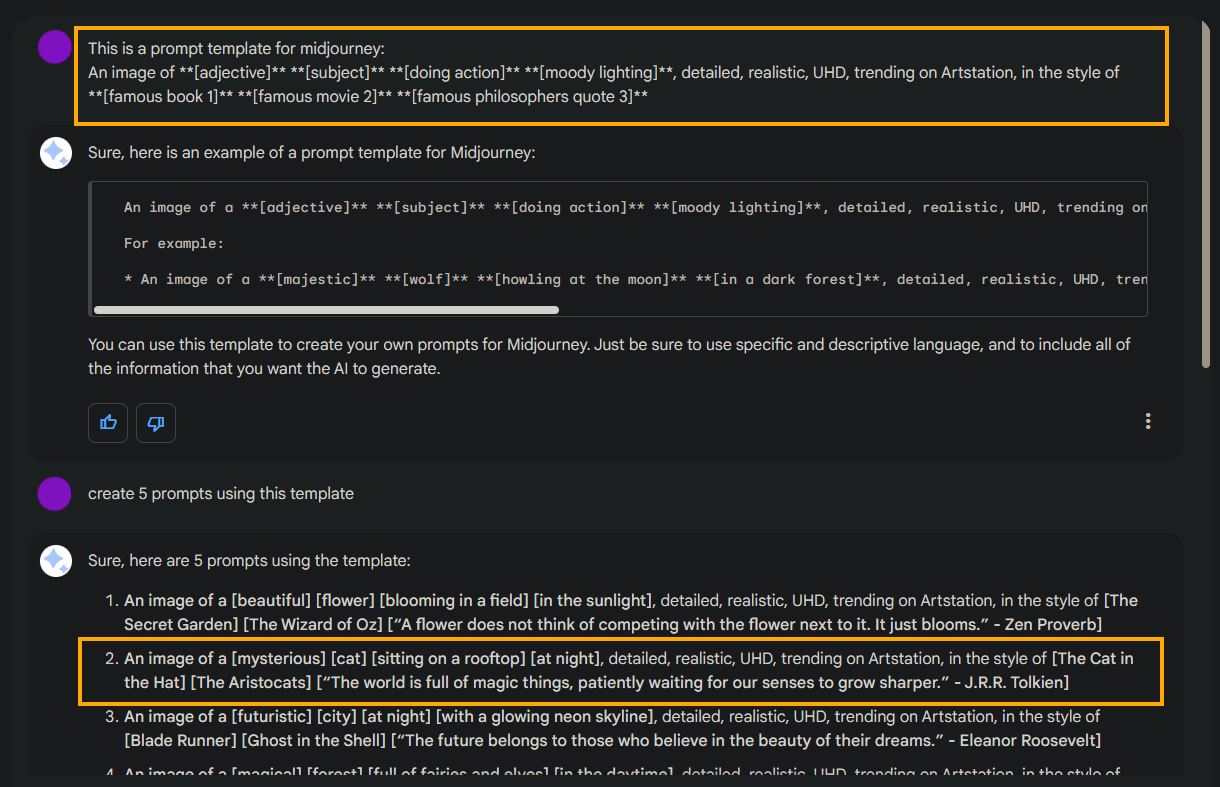Text-to-image generative Ai tools like Midjourney, Stable Diffusion, Dalle, Adobe Firefly, and Bing Image Creator, have gained immense popularity recently. And no one would have guessed that just 6 months ago they were all still a concept of science fiction. While they are super cool they rely on humans using the right prompts. So In this tutorial, we’ll teach you how to use Google Bard to generate optimized prompts and prompt templates that work in any Generative ai system.

Table of Contents
Related: How to get better results from ChatGPT with OpenAI Playground.
Over the past few months, Text-to-Image Generative AI platforms have gained significant popularity. These platforms offer an incredible set of tools for artists, designers, writers, and many other users to generate unique and creative images and texts. While most people can easily write a few sentences and create images, the quality of the images may not be as high as it could be. This is because textual prompts work best when used in a specific way.
A well-thought-out prompt can provide AI algorithms with the necessary information to create an image that precisely matches the user's request. To achieve this, another Generative AI system such as Google Bard or chatGPT can be used to streamline the prompt creation process. This can be done in two different ways. First, you can create single prompts, and second, you can create structured prompt templates that can be used to generate random content with specific base concepts.
How do you use Google Bard to create Prompt Templates for Midjourney, Adobe Firefly & other Generative Ais?
When creating prompts and prompt templates for AI systems like Google Bard or chatGPT, the most important focus needs to be on adjectives, verbs, and nouns that help describe the scene and context you want to create. While the order in which you start your prompts is important the starting point is key! Writing a base like the example below will allow you to prompt Google Bard to create random prompts with a set of core values.
Original Prompt Template:
"An image of **[adjective]** **[subject]** **[doing action]** **[moody lighting]**, detailed, realistic, UHD, trending on Artstation, in the style of **[famous book 1]** **[famous movie 2]** **[famous philosophers quote 3]**"
Google Bards generated prompt based on the original template:
"An image of a mysterious cat sitting on a rooftop at night, detailed, realistic, UHD, trending on Artstation, in the style of The Cat in the Hat and The Aristocats and “The world is full of magic things, patiently waiting for our senses to grow sharper.” - J.R.R. Tolkien”

As you can see in the example above, Google Bard was able to replace the content within the **[ ]** with randomly generated examples. You can recreate a base template using the same basic principles in any style or format you want. As with all Generative Ai, you will probably have to repeat the prompt generation until you get the results you want. But I think number 3 really gets the gist of it. 
Getting Google Bard to use your Prompt Template to Generate more Prompts.
Using everything you’ve learnt so far you can alter and automate prompting with Google Bard, ChatGPT and Bing Chat. While chatGPT is still the better of the 3 I think Google Bard will eventually seize the day as usual.
Here's another formula for Google Barb to create a text-to-image prompt you can try:
An image of **[adjective]** **[subject]** **[doing action]** **[moody lighting]**, detailed, realistic, UHD, trending on Artstation, in the style of **[famous book 1]** **[famous movie 2]** **[Cyberpunk 2077]**
This will get Google Bard to generate some responses you can then copy and paste into Midjourney, Adobe Firefly or another text-to-image Generator. Remember even though Google Bard has done the hard work, you may still need to change certain parts of the prompt, to get even better results. If you’re new to Generative Ais I suggest checking out Adobe Firefly first as it is a really easy-to-use platform.
